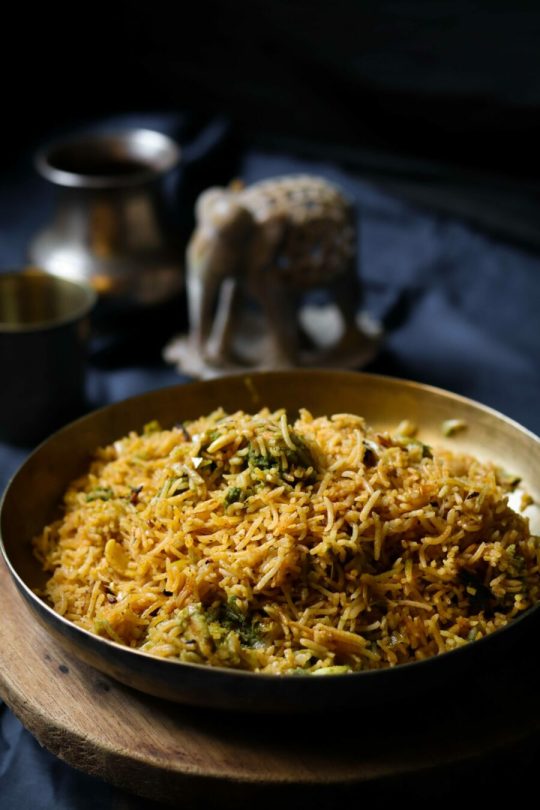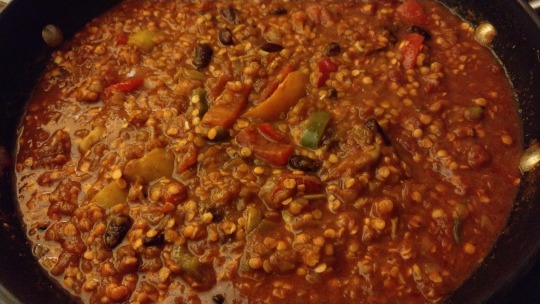#Healthy Basmati Rice
Explore tagged Tumblr posts
Text
Is Basmati Rice Healthier? - Shri Lal Mahal

When we talk about health, most of us think of a balanced diet and weight loss. One of the most important components of a healthy diet is the right type of rice. Choosing the right type of rice, like basmati, can help with your weight loss goals and provide your body with essential nutrients that you need.
Basmati rice is a long grain variety of rice that is known for its aroma and texture. It is high in fiber and has a low glycemic index, which helps keep blood sugar levels stable. It is also a good source of calcium and iron, as well as folic acid, which is a vital nutrient for pregnant women.
The high fiber content in basmati helps to improve digestion, which can help you lose weight. It is also a good source of magnesium, potassium, zinc, and phosphorous. In addition, the dietary fiber in basmati can help you maintain a regular digestive system and reduce the risk of constipation.
In a study, researchers found that eating 3 ounces of brown rice per day was associated with a 17% lower risk of colorectal cancer. The reason for this is that brown rice contains the whole kernel of the rice plant, including the germ, bran, and endosperm. This makes it a healthier option than white rice, which is only milled from the outer part of the rice kernel.
You can add some vegetables and legumes to your basmati pilaf to make it more wholesome and nutritious. Carrots, for instance, are a rich source of Vitamin A and antioxidants that promote eye health. Onions, on the other hand, are a great source of quercetin that helps fight free radicals in the body. It can also be a good idea to include some nuts, such as cashews and raisins, to help reduce the carbohydrate load of your meal.
It is also important to choose organic basmati, as it will contain less sodium than conventionally grown rice. You should also rinse the rice before cooking to remove any dirt or residue. You can do this by running the rice through a fine-mesh sieve or filling a pot with water and stirring the rice in it. You can also soak the rice overnight to soften it and shorten your cooking time.
While both jasmine and basmati rice are high in soluble fiber, basmati is better because it has a higher percentage of the mineral. It is also an excellent source of thiamine, which is vital for brain function and prevents the onset of dementia and Alzheimer’s disease.
Shri Lal Mahal Group

The Shri Lal Mahal Group is a well-known and respected company based in India that operates in various industries, including agriculture, food processing, and real estate. The group has a significant presence in the basmati rice industry and is known for its high-quality rice products.
The Shri Lal Mahal Group has been involved in the cultivation, processing, and distribution of basmati rice for several decades. They are known for their stringent quality control measures, which ensure that their basmati rice meets the highest standards.
In addition to basmati rice, the Shri Lal Mahal Group is also involved in the production and distribution of other agricultural products, such as wheat, pulses, and spices. They have a strong global presence and export their products to various countries around the world.
It's important to note that while the Shri Lal Mahal Group is a reputable company, it's always advisable to check the specific product's packaging and labels for detailed information, including nutritional content, cooking instructions, and any certifications or quality seals that may be present.
#basmati rice#long grain rice#shrilalmahal#brown rice#Is Basmati Rice Healthier#Healthy Basmati Rice
1 note
·
View note
Text

Homemade slow cooked Mexican chicken stew with rice 🥘🇲🇽
#stew#chicken#food#foodporn#scr4n#spicy#spicy food#hot food#meat#dinner#chicken stew#rice#basmati rice#boiled rice#coriander#coriander leaf#healthy food#homemade food#home cooked#home cooked food#slow cooker#slow cooked food#slow cooker stew#carbs#carbohydrates#slow cooked chicken#tomato#tomatoes#pepper#red pepper
71 notes
·
View notes
Text
How Indian rice manufacturers are shaping the global market

Indian rice has long held a place of pride in global kitchens, from the aromatic basmati grains that grace royal banquets to the nutritious non-basmati varieties that make up everyday meals worldwide. India is the world’s largest rice exporter, meeting over 40% of global rice demand (Source: FAO). Behind this success is the dedication and innovation of rice manufacturers in India, who are constantly adapting to meet international standards and market needs.
In this blog, we explore how Indian rice manufacturers are shaping the global market, promoting sustainability and securing India’s position as a rice exporting powerhouse.
Key factors driving Indian rice exports
Quality and Variety Rice manufacturers offer a diverse range of rice, from aromatic basmati to versatile non-basmati rice varieties. Each variety caters to different cuisines and preferences, ensuring steady demand in countries such as the United States, the Middle East, and Africa.
Competitive Pricing India's favorable agricultural conditions and cost-effective manufacturing processes enable competitive pricing. Combined with bulk export capabilities, this ensures that India remains a preferred supplier for global buyers.
Government policies and support Supportive government policies such as export incentives and trade agreements have contributed significantly to India's global dominance. For example, the recent removal of export restrictions on certain Indian rice varieties has boosted international trade opportunities.
Technological advances in rice manufacturing
Technology is transforming rice production in India, increasing efficiency and quality while reducing waste.
Modern milling equipment: Automated milling units maintain uniform grain size, texture and polish, which are critical to meeting international quality standards.
AI-powered sorting: Advanced sorting systems powered by artificial intelligence help eliminate impurities, ensuring that premium-grade rice reaches global markets.
Packaging innovations: Innovative vacuum-sealing and biodegradable packaging materials have made Indian rice more attractive to environmentally conscious buyers.
Rice manufacturers in India are adopting these advancements to maintain their competitive edge while meeting global priorities.
Sustainability initiatives by Indian manufacturers
As environmental concerns grow, rice exporters in India are adopting sustainable practices to meet global expectations.
Water-efficient farming: Techniques such as alternate wetting and drying (AWD) reduce water consumption, which is crucial for regions facing water scarcity.
Low carbon footprint: Adoption of renewable energy in processing units and adoption of eco-friendly logistics have reduced emissions in the rice supply chain.
Waste Utilization: By-products such as rice husk are being reused for bioenergy and building materials, thereby reducing waste and generating additional revenue streams.
These initiatives not only enhance India’s reputation but also align with the sustainability goals of global buyers.
Conclusion: The future of Indian rice on the global stage
The success of rice manufacturers in India is not just about meeting current demands, but also about shaping the future of the global rice trade. By prioritizing quality, leveraging technology, and adopting sustainable practices, Indian manufacturers have solidified their position as reliable partners in the global food supply chain.
As international markets evolve, India’s ability to adapt and innovate will continue to drive its leadership in the rice export industry, ensuring that Indian rice remains a staple in households around the world.
2 notes
·
View notes
Text
made chicken adobo for the first time last night and it was sooooo good i want to make it at least nine thousand more times
#and it was so easy too!!#pan frying chicken used to scare me bc i'd always do it wrong somehow#but everything went so smoothly this time around#i made some basmati rice on the side everything tasted so amazing#speaking of rice i bought a 5 lb bag of brown rice in the name of being healthy and i regret it sm#i don't even like brown rice what was i thinking...#there's a whole big jar of it sitting in the kitchen and every time i see it i sigh a heavy sigh#like idek what to do with it....#stone speaks
3 notes
·
View notes
Text
Matar Pulao Recipe: How to make Green Peas Pulao
Matar Pulao Recipe: Matar Pulao also known as Green Peas Pulao, is a popular and comforting Indian dish made with basmati rice, fresh or frozen green peas (matar), and a blend of aromatic spices. It is a flavorful one-pot meal that combines the subtle sweetness of peas with the warmth of spices like cumin, cardamom, and cinnamon. Often prepared for lunch or dinner, it is a quick, nutritious, and…
#Basmati Rice Recipes#Easy Indian Rice Recipes#Green Peas Pulao#Healthy Rice Recipes#Indian comfort food#Matar Pulao Recipe#Matar Pulao with Basmati Rice#One-Pot Meals#Quick Dinner Recipes#Quick Pulao Recipes#Simple Vegetarian Meals#spicy veg recipes#Traditional Matar Pulao#Vegan Matar Pulao#Vegetarian Pulao
0 notes
Text
Golden Sella Basmati Rice - Shop at ElevenFoods Today

Experience the exquisite taste of Golden Sella Basmati Rice at ElevenFoods. Known for its golden hue, long grains, and rich aroma, this premium rice enhances any dish with its distinct flavor and fluffy texture. Perfect for special occasions or everyday meals. Shop now for quality you can trust! https://elevenfoods.in
#basmati rice#best basmati rice manufacturers in india#foods#rice#best basmati rice#1121 basmati rice#sella basmati rice#indian rice#good basmati rice#best rice#brown basmati rice#basmati rice benefits#basmati rice nutrition#basmati rice recipe#biryani basmati rice#golden sella basmati rice#cooking basmati rice#extra long basmati rice#healthy meals with rice#indian brown rice#long grain brown rice#buy basmati rice#long grain brown basmati rice#basmati rice near me#brown basmati rice near me
1 note
·
View note
Text
Sridana Foods Basmati Rice
Sridana Basmati Rice stands out as a symbol of culinary excellence. Renowned for its distinct aroma, long grains, and exceptional quality, Sridana Basmati Rice has become a preferred choice for chefs and home cooks alike. Join us on a journey as we explore the origins, unique characteristics, and the culinary magic that makes Sridana Basmati Rice a staple in kitchens around the globe.
The Origin of Sridana Basmati Rice: Sourced from the fertile plains of the Indian subcontinent, Sridana Basmati Rice is a variety that boasts a rich heritage. The word "Basmati" itself translates to "fragrant" in Sanskrit, and this rice lives up to its name, offering a delightful and aromatic experience that elevates any dish it graces. The unique climate and soil conditions of its growing regions contribute to the exceptional quality and flavor profile of Sridana Basmati Rice.
Distinctive Features:
Aromatic Excellence: The hallmark of Sridana Basmati Rice is its captivating aroma. During cooking, the grains release a sweet, nutty fragrance that adds an extra layer of sophistication to a wide range of culinary creations.
Exceptional Grain Length: Sridana Basmati Rice is characterized by its long and slender grains. When cooked, these grains remain separate, creating a light and fluffy texture that is perfect for pilafs, biryanis, and other rice-based dishes.
Versatility in the Kitchen: Whether you're crafting a savory biryani, a flavorful pilaf, or a simple side dish, Sridana Basmati Rice proves to be a versatile ingredient. Its ability to absorb flavors makes it an ideal companion for a variety of spices, herbs, and accompanying ingredients.
Nutritional Benefits:
Low in Fat and Sodium: Sridana Basmati Rice is naturally low in fat and sodium, making it a heart-healthy choice for those mindful of their dietary intake.
Rich in Carbohydrates: As a complex carbohydrate, this rice provides a steady release of energy, making it a suitable option for sustaining energy levels throughout the day.
Gluten-Free and Non-GMO: Sridana Basmati Rice is naturally gluten-free and non-genetically modified, catering to individuals with specific dietary preferences and restrictions.
Delightful Recipes:
Sridana Basmati Biryani:
Ingredients: Sridana Basmati Rice, aromatic spices, vegetables, protein of choice.
Method: Layered with fragrant spices, vegetables, and protein, Sridana Basmati Biryani is a celebration of flavors and textures.
Sridana Basmati Rice Pilaf:
Ingredients: Sridana Basmati Rice, broth, herbs, and choice of vegetables or nuts.
Method: Create a simple yet elegant pilaf by cooking Sridana Basmati Rice with fragrant herbs and your favorite additions.
Sridana Basmati Rice Pudding:
Ingredients: Sridana Basmati Rice, milk, sugar, cardamom, and nuts.
Method: Transform this rice into a luscious dessert by simmering it in sweetened milk with aromatic spices and nuts.
Conclusion: Sridana Basmati Rice is not just a staple in the pantry; it's an invitation to explore the diverse and rich tapestry of culinary delights. Elevate your cooking experience with the exquisite aroma, elegance, and nutritional excellence that Sridana Basmati Rice brings to your table. Whether in savory dishes or sweet treats, let the grains of Sridana Basmati Rice weave a story of culinary perfection in every bite.

0 notes
Text

From Farm to your table. Enjoy the taste with every bite of your meal with Our Basmati Rice🌾
#rice#food#foodie#instafood#yummy#foodblogger#delicious#foodlover#healthyfood#indianfood#foodies#healthy#organicfarming#basmatirice#SKRM#skrmindia#shreekrishnaricemills#basmati rice exports#basmati#basmati rice exporter#basmatiriceproducer#rice supplier#rice exporter
0 notes
Text
Carrot Peas Pulao Lunch Plate Pics
Also in the blog now: Carrot Peas Pulao Lunch Plate PicsMadurai Special Thanni ChutneyDosai Vadai Sambar BreakfastEasy Aappam Recipe Check out my Instagram profile and highlights for more pics and recipes – @Fhareena #parveenskitchen #foodblogger

View On WordPress
#Appetizer#Balanced Diet#Basmati Rice#Carrot Peas Pulao#Easy recipes#Fragrant Rice#Grilled#Healthy#Indian Cuisine#indian food#Indian recipes#Lunch plate#Lunchtime#marinated#Meal#Nutritious#paneer#Paneer tikka#Pilaf#rice#Spices#Tandoori#tikka#Vegetarian
0 notes
Text

Basmati rice exporter from india
Muskan Overseas is an established Miller and Exporter of Basmati Rice to the world over. The Company sails hight for its premium quality Rice and expertise in exports.
0 notes
Text
Easy Vegetable Biryani Recipe - Delicious and Healthy
This easy vegetable biryani recipe is packed with flavourful spices, fresh vegetables, and aromatic basmati rice, making it a healthy and satisfying meal. Whether you are a vegetarian or simply looking for a delicious rice dish, this recipe is sure to impress! Vegetable biryani is a classic Indian dish that has been enjoyed for generations. Originating in the Indian subcontinent, biryani has…

View On WordPress
#Authentic vegetable biryani recipe.#Easy vegetable biryani recipe#Gluten-free vegetable biryani#Healthy vegetable biryani#Indian vegetable biryani#One-pot vegetable biryani#Paneer biryani#Spicy vegetable biryani#Vegan vegetable biryani#Vegetable biryani with basmati rice
0 notes
Text
#organic rice#healthy foods#organic foods#natural foods#brown rice#wild rice#red rice#basmati rice#conventional rice#carbohydrates
0 notes
Text

My behemoth salad 🥗
(Ingredients in the tags)
#salad#good eats#healthy eating#plant based#arugula#spinach#celery#red onion#tomatoes#basmati rice#kidney beans#cucumber#parsley#avocado#yummyeats#big salad#feel good#eat well
0 notes
Text
What makes Indian rice manufacturers the top choice for global importers?

Indian rice manufacturers have built a strong global reputation for their quality, variety, and consistent supply. As one of the largest rice exporting countries, India supplies premium and affordable rice varieties to over 150 countries. But what makes them the preferred choice for international buyers? Let’s look at the factors that make Indian rice exporters stand out in the global market.
Introduction to Indian Rice Manufacturing
India has long been a global leader in rice production, exporting over 40% of the world’s total rice supply (Source: FAO). The country’s manufacturing capacity is supported by its vast paddy fields, skilled workforce, and advanced milling facilities. Indian rice manufacturers cater to the market’s diverse needs, offering everything from high-quality Basmati to cost-effective bulk options.
This adaptability and focus on quality ensures that Indian rice continues to dominate the global market.
Quality Standards and Certifications
Quality assurance is the cornerstone for rice suppliers in India. They follow international guidelines to ensure that rice meets the expectations of global importers. Some of the key certifications include:
ISO 22000 and HACCP: highlighting their commitment to food safety.
Organic certifications: ensuring compliance with USDA and EU standards.
Fair trade and sustainability practices: signifying ethical production.
Many manufacturers use state-of-the-art milling techniques and conduct strict quality checks. These efforts make Indian rice a reliable choice for consumers around the world.
Wide variety of rice types
India offers an unmatched variety of rice, enabling manufacturers to meet the diverse preferences of global markets. Popular choices include:
Basmati rice: Famous for its aroma and long-grained texture, it is widely in demand in Europe and the Middle East.
Non-Basmati Rice: Varieties such as IR64 and Sona Masuri are staples in Africa and Asia.
Specialty and Organic Rice: Catering to niche markets focused on health and sustainability.
This broad portfolio allows Indian exporters to meet the needs of a variety of customers, from gourmet chefs to wholesale distributors.
Cost-effectiveness and supply reliability
Indian rice manufacturers maintain a balance between quality and affordability. This is achieved through:
High production efficiency: Leveraging large-scale operations and advanced machinery.
Government policies: Subsidies for farm equipment and fertilizers reduce production costs.
Geographical advantage: Fertile land and favorable weather ensure consistent yields.
Their ability to handle bulk orders while adhering to strict timelines makes Indian rice exporters reliable partners for global importers.
Commitment to sustainability and innovation
Sustainability has become a priority for Indian rice manufacturers. Many companies are adopting environmentally friendly practices such as:
Water conservation: Using innovative irrigation techniques to reduce water consumption.
Renewable energy: Integrating solar and bioenergy into milling processes.
Waste utilization: Converting rice husk into biofuels and fertilizers.
Such practices align with the values of environmentally conscious consumers, strengthening India’s position in the global market.
Additionally, advances in traceability and quality control, including digital systems, enhance transparency and trust between manufacturers and importers.
India’s global prominence in rice exports is supported by its strong manufacturing base, diverse offerings, and commitment to quality. By choosing Indian rice manufacturers, importers benefit from reliable, high-quality rice that meets a variety of market demands. Whether it’s aromatic basmati for fine eating or affordable bulk varieties for everyday use, Indian exporters continue to set benchmarks in the global rice trade.
2 notes
·
View notes
Text

I COULD MURDER A CURRY... Well, at least commit a certain amount of violence on one.
In other words, I wanted something curry-ish the other day without taking much trouble over it, so I threw this together from what was in the cupboard, fridge and freezer.
(There was rather less than I expected. That's been fixed.)
When I discovered we had no lamb or chicken it ended up as unintended vegetarian, and can as easily become vegan; just leave out the ghee. If my result is anything to go by, all variations will taste great.
NB #1, there's no salt; the preserved lemon has plenty.
NB #2, metric measurements are correct, Imperial are approximate, but this whole recipe was pretty vague from start to finish, so wing it.
That's what I did. For instance, preserved lemon is Moroccan not Indian, yet it worked just fine.
Lemon and lime lentil curry
Ingredients
1 tablespoon ghee or coconut oil (I used a 50-50 combination)
2 onions peeled and chopped fine
2 tablespoon hot curry powder
1 tablespoon mild curry powder (or 1 hot / 2 mild if preferred)
6 cloves of garlic peeled and chopped fine
2 400g / 14oz tins chopped tomatoes in juice
1 400g / 14oz tin kidney beans, drained and rinsed
250 g / 1 cup red lentils
250 g / 1 cup each of red, green, and yellow peppers, sliced and coarsely chopped (optional; we had them in the freezer)
2 heaped tablespoons lime pickle, chopped fine (hot or mild as preferred; Patak brand is good. I used home-made hot)
2 heaped tablespoons preserved lemon, chopped fine (again, I used home-made) *
1 tablespoon garam masala
* If you can't source preserved lemons, use the zest and juice of at least one fresh lemon (two might be better). If you've only got bottled lemon juice, add 125ml / 1/2 cup of it when the tomatoes go in.
Method
Heat your preferred cooking fat in a pan (a wok is even better), add the chopped onions, and cook until soft and translucent. If desired, cook until starting to brown (this may take up to 45 minutes).
Push the onions to one side, allow the fat to flow into the centre of the pan, add the dry spices, combine well with the fat and cook for about five minutes.
Add the garlic and cook for a further five minutes.
Add the kidney beans and lentils to this mixture, stir well, add the peppers, lime pickle and preserved lemon, and stir again.
Add the chopped tomatoes, and one tomato-tin full of water. (Also add the lemon juice (and zest), if that's what you're using instead of preserved lemons.)
Stir well, turn the heat right down, cover, and simmer for about 30 to 45 minutes. (This is where I'd have added 2 cubed chicken breasts, if I'd had them).
Check occasionally to ensure nothing is sticking, adding a little water if required. Taste during this process, and adjust the seasoning. (Which means, if you're using fresh lemon or bottled lemon juice, this is when to add some salt.)
When the lentils are done (I like them a little al dente), sprinkle on 1 tablespoon garam masala, stir it in then serve.
Accompany with Basmati rice, or chapatis (flour tortillas / wraps will do just fine), or naan bread, or any combination of these. I did a mix of 1/3 brown Basmati / 2/3 white Basmati.
@dduane pointed out that what with the carbs, protein, dietary fibre etc., this is also quite healthy. That's an unexpected bonus for something I just thought was no trouble to make, tasted good...
And didn't involve committing even a minor felony, though a slice of apple tort to follow would have been nice... :->
#food and drink#indian food#curry#vegetarian curry#lentils#I COULD MURDER A CURRY#GNU Terry Pratchett
246 notes
·
View notes
Text

Healthy Halal rice with chicken and white sauce -
Ingredients:
For the chicken:
- 1 lb boneless, skinless chicken breast, cut into bite-sized pieces
- 2 cloves garlic, minced
- 1 teaspoon ground cumin
- 1 teaspoon ground coriander
- 1 teaspoon paprika
- Salt and pepper to taste
- 2 tablespoons olive oil
For the rice:
- 1 cup basmati rice
- 1 1/2 cups chicken broth
- Salt to taste
- 1 tablespoon butter
For the white sauce:
- 1 cup Greek yogurt
- 1 tablespoon lemon juice
- 1 clove garlic, minced
- Salt and pepper to taste
Instructions:
1. In a bowl, mix the minced garlic, cumin, coriander, paprika, salt, and pepper. Add the chicken pieces and toss to coat. Let marinate for at least 30 minutes.
2. In a large skillet, heat the olive oil over medium-high heat. Add the marinated chicken pieces and cook until they are browned and cooked through, about 5-7 minutes. Remove from heat and set aside.
3. In a medium saucepan, combine the basmati rice, chicken broth, salt, and butter. Bring to a boil, then reduce heat to low, cover, and simmer for 15-20 minutes, or until the rice is cooked and all the liquid is absorbed.
4. In a small bowl, mix together the Greek yogurt, lemon juice, minced garlic, salt, and pepper to make the white sauce.
5. To serve, place a portion of the cooked rice on a plate, top with the cooked chicken pieces, and drizzle with the white sauce. Garnish with fresh herbs or sliced vegetables, if desired.
#healthy food#food for thought#food fight#comfort food#fast food#food photography#foodie#food#foodpics#foodlover#japanese food#foodmyheart#tw food#healthy salad recipes#lunch recipes#pasta recipes#pasta recipe#salad recipes#soup recipe#recipe#reciprocity#recipies#recipes#healhtylifestyle#healthy lunch ideas#healthy lunch#healthy diet#healthy#healthy living#self healing
14 notes
·
View notes